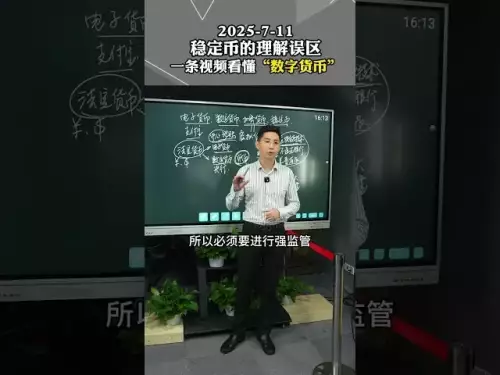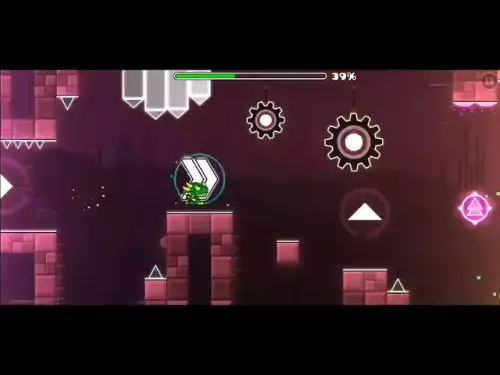-
 Bitcoin
Bitcoin $111200
0.38% -
 Ethereum
Ethereum $4311
0.07% -
 XRP
XRP $2.835
0.66% -
 Tether USDt
Tether USDt $1.000
0.01% -
 BNB
BNB $871.8
1.48% -
 Solana
Solana $203.7
0.33% -
 USDC
USDC $0.9998
0.00% -
 Dogecoin
Dogecoin $0.2181
1.15% -
 TRON
TRON $0.3277
-1.27% -
 Cardano
Cardano $0.8297
0.63% -
 Hyperliquid
Hyperliquid $47.23
0.97% -
 Chainlink
Chainlink $22.44
1.16% -
 Ethena USDe
Ethena USDe $1.001
0.03% -
 Sui
Sui $3.396
0.65% -
 Bitcoin Cash
Bitcoin Cash $602.4
-1.68% -
 Stellar
Stellar $0.3591
0.65% -
 Avalanche
Avalanche $24.72
2.04% -
 Hedera
Hedera $0.2207
1.81% -
 Cronos
Cronos $0.2643
-2.47% -
 UNUS SED LEO
UNUS SED LEO $9.508
-0.51% -
 Litecoin
Litecoin $113.8
1.95% -
 Toncoin
Toncoin $3.090
0.52% -
 Shiba Inu
Shiba Inu $0.00001239
0.76% -
 Polkadot
Polkadot $3.865
1.24% -
 Uniswap
Uniswap $9.409
1.13% -
 World Liberty Financial
World Liberty Financial $0.2393
28.62% -
 Dai
Dai $0.0000
0.01% -
 Ethena
Ethena $0.7362
-1.69% -
 Monero
Monero $270.5
-0.07% -
 Aave
Aave $302.9
0.38%
How Do Play-to-Earn (P2E) Games Work?
Play-to-earn games use blockchain and NFTs to let players earn real value through gameplay, with ownership and rewards secured on decentralized networks.
Sep 07, 2025 at 10:54 am
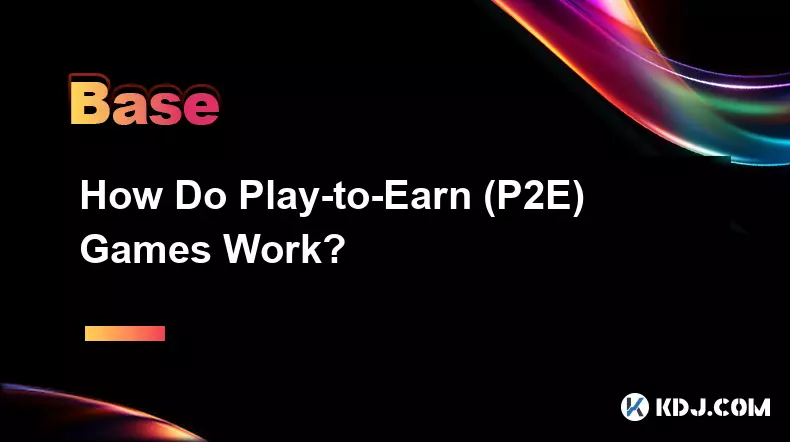
Understanding the Core Mechanics of Play-to-Earn Games
1. Play-to-Earn (P2E) games operate on blockchain technology, allowing players to earn cryptocurrency or non-fungible tokens (NFTs) by participating in the game environment. Unlike traditional video games where rewards are purely cosmetic or confined within the game, P2E models offer tangible digital assets that hold real-world value.
2. Players typically begin by acquiring necessary in-game assets, such as characters, tools, or land, which are represented as NFTs. These assets can be purchased using cryptocurrency or sometimes earned through initial gameplay tasks. Ownership of these NFTs is recorded on the blockchain, ensuring verifiable scarcity and authenticity.
3. As players engage in activities—like completing quests, battling other players, or managing virtual economies—they earn tokens. These tokens are often specific to the game’s ecosystem and can be traded on decentralized exchanges for other cryptocurrencies or fiat money.
4. The underlying blockchain ensures transparency in transactions and asset ownership. Smart contracts govern the rules of earning, trading, and upgrading in-game items, removing the need for centralized oversight and reducing the risk of fraud.
5. Some P2E games incorporate staking mechanisms, where players can lock their earned tokens to receive additional rewards over time. This not only incentivizes long-term engagement but also helps stabilize the game’s internal economy by reducing token circulation volatility.
The Role of NFTs in Play-to-Earn Ecosystems
1. NFTs serve as the backbone of asset ownership in P2E games. Each NFT represents a unique digital item—be it a warrior, a piece of armor, or a plot of virtual land—making it impossible to replicate or counterfeit.
2. Players can buy, sell, or trade these NFTs on marketplaces, often outside the game’s official platform. This creates a player-driven economy where supply and demand dictate prices, rather than developer-imposed limitations.
3. Upgrades and achievements within the game can enhance the value of an NFT. For instance, a character that has won multiple battles or completed rare quests may fetch a higher price in the secondary market.
4. Developers sometimes limit the total number of certain NFTs to maintain rarity. This scarcity contributes to their desirability and potential for appreciation in value over time.
5. Ownership of NFTs gives players true control over their in-game assets, allowing them to monetize their time and skill beyond the confines of the game.
Economic Models and Tokenomics in P2E Games
1. Most P2E games utilize a dual-token system: one token for governance and long-term investment, and another for daily transactions and rewards. This separation helps balance inflationary pressures and sustains economic stability.
2. The reward token is typically earned through gameplay and used to purchase upgrades, enter tournaments, or breed new characters. Its value fluctuates based on market demand and the game’s popularity.
3. The governance token allows holders to vote on key decisions, such as changes to game mechanics or distribution of treasury funds. This decentralized approach empowers the community and aligns incentives between players and developers.
4. Inflation is a critical challenge in P2E economies. If too many tokens are generated without sufficient utility or sinks (mechanisms that remove tokens from circulation), their value can plummet, undermining player trust.
5. Sustainable P2E games implement mechanisms like token burning, service fees, and limited reward pools to regulate supply and preserve economic health.
Challenges and Risks in the P2E Space
1. Entry barriers can be high due to the upfront cost of acquiring NFTs. This pay-to-play model may exclude players from lower-income regions, contradicting the inclusive promise of decentralized gaming.
2. Market volatility affects both token and NFT values. A sudden drop in investor confidence can lead to rapid devaluation, causing financial losses for players who invested heavily.
3. Scams and fraudulent projects are prevalent in the P2E space. Some games are designed as “pump-and-dump” schemes, where developers abandon the project after extracting funds from early adopters.
4. Regulatory uncertainty looms over many P2E games, especially regarding whether tokens qualify as securities. Governments may impose restrictions that disrupt operations or limit accessibility.
5. Players must conduct thorough research before investing time or money into any P2E game, verifying the team’s credibility, code transparency, and long-term roadmap.
Frequently Asked Questions
What determines the value of in-game tokens in a P2E game?The value is influenced by market demand, the game’s popularity, token utility within the ecosystem, and external exchange listings. Scarcity and buyback mechanisms also play a role.
Can I earn a living playing P2E games?Some players, particularly in regions with lower living costs, generate significant income through gameplay, scholarships, or trading. However, earnings are not guaranteed and depend on market conditions and time investment.
How do I start playing a P2E game?Begin by researching a reputable game, setting up a crypto wallet, purchasing required NFTs, and connecting your wallet to the game platform. Tutorials and community guides are often available to assist new players.
Are P2E games safe from hacking?While blockchain technology is secure, vulnerabilities can exist in smart contracts or third-party platforms. Audited games with transparent codebases reduce the risk, but users should always safeguard their private keys.
Disclaimer:info@kdj.com
The information provided is not trading advice. kdj.com does not assume any responsibility for any investments made based on the information provided in this article. Cryptocurrencies are highly volatile and it is highly recommended that you invest with caution after thorough research!
If you believe that the content used on this website infringes your copyright, please contact us immediately (info@kdj.com) and we will delete it promptly.
- Litecoin, Ethereum, and Growth Prediction: What's Next for Crypto?
- 2025-09-07 16:25:13
- Ozak AI Presale: Riding the AI Wave for Potential 100x Returns
- 2025-09-07 16:45:13
- Spin to Win: Your Guide to Coin Master Free Spins and Links (September 2025)
- 2025-09-07 16:45:13
- Remittix: The Best Crypto Under $1 to Watch Now, Ya Heard?
- 2025-09-07 16:50:12
- Paxos, Hyperliquid, and USDH: Stablecoin Buybacks and Institutional Adoption
- 2025-09-07 16:55:13
- Meme Coins, Whales, and the Long Game: What's the Deal?
- 2025-09-07 15:25:16
Related knowledge
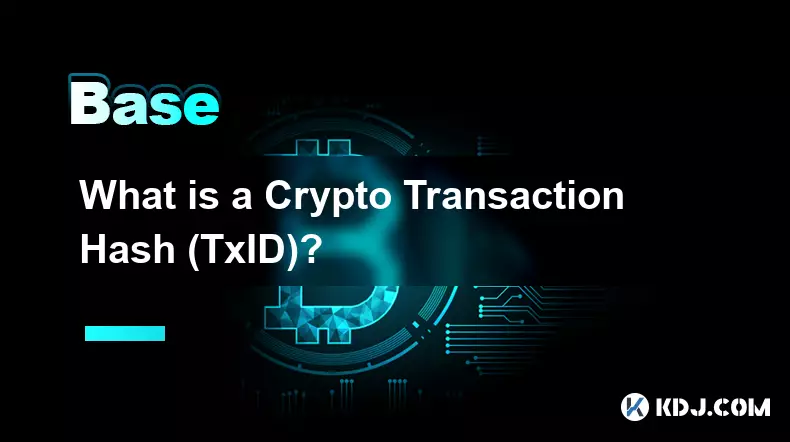
What is a Crypto Transaction Hash (TxID)?
Sep 07,2025 at 01:18pm
Understanding the Role of a Crypto Transaction Hash1. A crypto transaction hash, often referred to as TxID, is a unique identifier generated when a tr...

What is On-Chain and Off-Chain Data?
Sep 07,2025 at 04:55pm
Understanding On-Chain Data1. On-chain data refers to all information that is recorded directly on a blockchain. Every transaction, smart contract exe...

How Do Play-to-Earn (P2E) Games Work?
Sep 07,2025 at 10:54am
Understanding the Core Mechanics of Play-to-Earn Games1. Play-to-Earn (P2E) games operate on blockchain technology, allowing players to earn cryptocur...
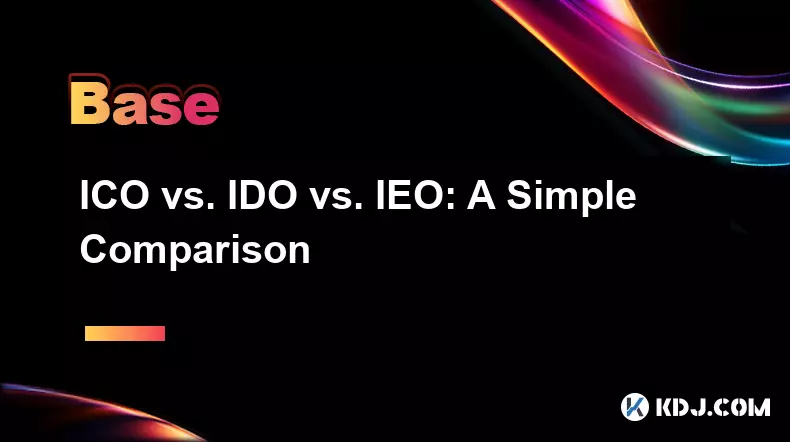
ICO vs. IDO vs. IEO: A Simple Comparison
Sep 07,2025 at 03:19pm
Understanding the Basics of Crypto Fundraising Models1. Initial Coin Offerings (ICOs) emerged as one of the earliest methods for blockchain projects t...

What is Layer 1 and Layer 2 in Blockchain?
Sep 06,2025 at 10:00pm
The Evolution of Decentralized Exchanges in the Crypto Ecosystem1. Decentralized exchanges (DEXs) have reshaped how traders interact with digital asse...
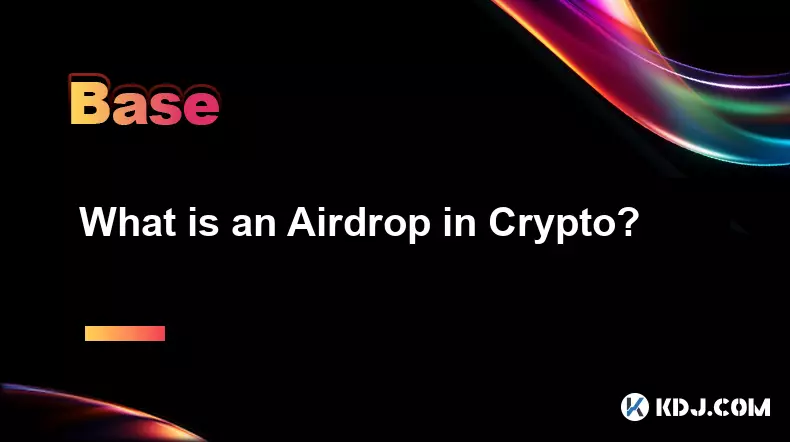
What is an Airdrop in Crypto?
Sep 07,2025 at 03:36am
What is a Crypto Airdrop?1. A crypto airdrop refers to the distribution of free tokens or coins to wallet addresses within the blockchain ecosystem. T...

What is a Crypto Transaction Hash (TxID)?
Sep 07,2025 at 01:18pm
Understanding the Role of a Crypto Transaction Hash1. A crypto transaction hash, often referred to as TxID, is a unique identifier generated when a tr...

What is On-Chain and Off-Chain Data?
Sep 07,2025 at 04:55pm
Understanding On-Chain Data1. On-chain data refers to all information that is recorded directly on a blockchain. Every transaction, smart contract exe...

How Do Play-to-Earn (P2E) Games Work?
Sep 07,2025 at 10:54am
Understanding the Core Mechanics of Play-to-Earn Games1. Play-to-Earn (P2E) games operate on blockchain technology, allowing players to earn cryptocur...

ICO vs. IDO vs. IEO: A Simple Comparison
Sep 07,2025 at 03:19pm
Understanding the Basics of Crypto Fundraising Models1. Initial Coin Offerings (ICOs) emerged as one of the earliest methods for blockchain projects t...

What is Layer 1 and Layer 2 in Blockchain?
Sep 06,2025 at 10:00pm
The Evolution of Decentralized Exchanges in the Crypto Ecosystem1. Decentralized exchanges (DEXs) have reshaped how traders interact with digital asse...

What is an Airdrop in Crypto?
Sep 07,2025 at 03:36am
What is a Crypto Airdrop?1. A crypto airdrop refers to the distribution of free tokens or coins to wallet addresses within the blockchain ecosystem. T...
See all articles





















![Daily Level for 9/7/2025: Momentum by EnenzoGD (WITH COIN) [GD Daily Video #809] Daily Level for 9/7/2025: Momentum by EnenzoGD (WITH COIN) [GD Daily Video #809]](/uploads/2025/09/07/cryptocurrencies-news/videos/daily-level-momentum-enenzogd-coin-gd-daily-video/68bcd9494f8d8_image_120_90.webp)


